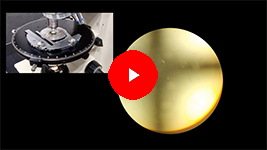
The uniaxial versus biaxial interf. figures
The configuration of isogyres and isochromatic curves (particularly the former) and their behaviour when turning the mineral plate, makes it possible to distinguish a uniaxial from a biaxial crystal.
The interference figures which characterise uniaxial crystals are those which are made up of an isogyre in the form of a cross whose shape remains unchanged when the microscope stage is turned. Whether it moves or not is irrelevant, but it will never change shape (either by doubling its size or breaking up into two separate bands).
If the interference figure changes shape when the crystal is turned, it may be either uniaxial or biaxial. Depending on how it changes, it may or may not be possible to tell whether it is uniaxial or biaxial.
Index | Introduction | PPL | XPL orthos | XPL conos | Previous | Next